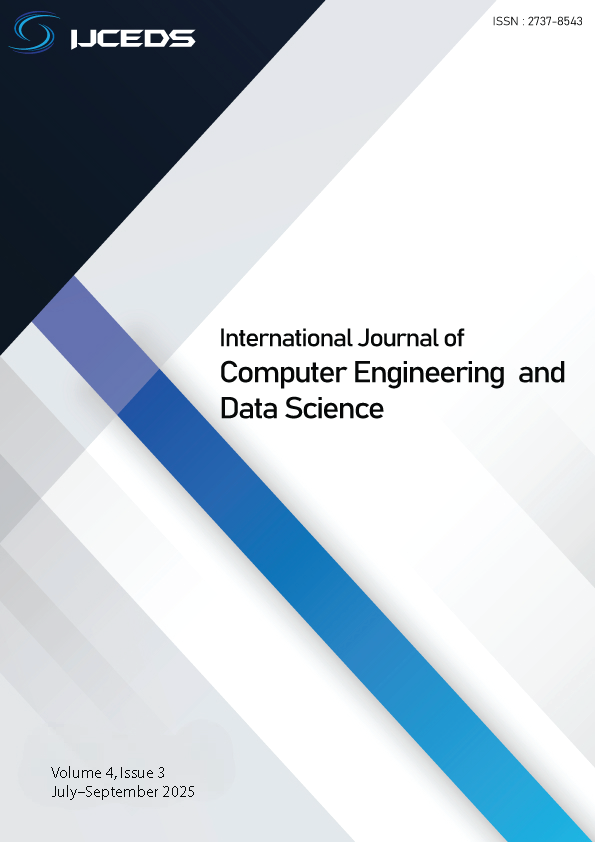Recyclitix: Waste Classification with CNN - Mobile Application
Keywords:
Waste Classifier, Deep learning, Mobile application, Convolutional neural networks, Artificial Intelligence (AI)Abstract
Recylitix is an innovative mobile application that improves waste sorting efficiency through AI-powered image classification and contextual guidance. Leveraging computer vision and deep learning models using TensorFlow Lite, Recyclitix enables users to accurately identify waste types and receive localized recycling recommendations. This intelligent sorting mechanism reduces classification errors, optimizing recycling processes and minimizing the environmental impact of poorly sorted waste. The platform is built on a modern architecture that integrates a Spring Boot backend with a native Android application. Communication between components is facilitated by Retrofit for efficient API interaction. By combining robust machine learning with a user-centric mobile interface, Recylitix bridges the gap between sustainable practices and everyday behavior. It enables individuals, municipalities and waste management players to adopt smarter, more responsible recycling habits.
Downloads
References
Resource Recycling, “NYC study finds lower capture rates, higher contamination,” 2024.
California Management Review, “America’s Broken Recycling System,” 2023. [Online]. Available:
https://cmr.berkeley.edu/2023/05/america-s-broken-recycling-system/
X. Zhou and C. Yu, “Deep learning-based waste classification for smart waste management,”
Sustainable Cities and Society, vol. 62, p. 102411, 2021.
M. Yang and G. Thung, “CNN-based image classification for waste sorting using transfer learning,”
in Proc. IEEE Int. Conf. Big Data, 2018.
D. Barletta, M. Caivano, A. Nannavecchia, and M. Scalera, “Automatic classification of garbage images
using deep learning,” Waste Management, vol. 119, pp. 105–114, 2021.
H. Gupta, A. Jain, S. Narang, and M. Garg, “IoT-based smart waste management system for smart cities,”
International Journal of Advanced Research in Computer Science and Software Engineering, vol. 5, no. 2,
pp. 45–52, 2015.
T. Wu, H. Zhang, W. Peng, F. Lü, and P. J. He, “Applications of convolutional neural networks for intelligent
waste identification and recycling: A review,” Resources, Conservation and Recycling, vol. 190, p. 106813, 2023.
A. Howard, M. Sandler, G. Chu, et al., “Searching for MobileNetV3,” in Proc. IEEE/CVF Int. Conf. Computer Vision (ICCV),
, pp. 1314–1324.
X. Li, Y. Zhang, M. Wang, and J. Chen, “Evaluation of practical edge computing CNN-based solutions for intelligent
recycling bins,” IET Smart Cities, vol. 5, no. 2, pp. 89–102, 2023.
B. J. Fogg, “A behavior model for persuasive design,” in Proc. 4th Int. Conf. Persuasive Technology, 2009.
R. M. Ryan and E. L. Deci, “Self-determination theory and the facilitation of intrinsic motivation, social development,
and well-being,” American Psychologist, vol. 55, pp. 68–78, 2000.
S. Qian, C. Ning, and Y. Hu, “MobileNetV3 for image classification,” in 2021 IEEE 2nd Int. Conf. Big Data, Artificial Intelligence
and Internet of Things Engineering (ICBAIE), 2021, pp. 490–497.
F. Nekouei, “Trash type image dataset,” Kaggle, 2022. [Online]. Available:
https://www.kaggle.com/datasets/farzadnekouei/trash-type-image-dataset
[Accessed: Sept. 24, 2025].
P. C. Stern, “A reexamination on how behavioral interventions can promote household action to limit climate change,”
Nature Communications, vol. 11, no. 1, p. 918, Feb. 2020.
L. Robinson, S. R. Cotten, H. Ono, A. Quan-Haase, G. Mesch, W. Chen, J. Schulz, T. M. Hale, and M. J. Stern,
“Digital inequalities and why they matter,” Information, Communication & Society, vol. 18, no. 5, pp. 569–582, 2015.
Ellen MacArthur Foundation, *Completing the Picture: How the Circular Economy Tackles Climate Change*, 2019.
Downloads
Published
How to Cite
Issue
Section
ARK
License
Copyright (c) 2025 Hammam ELKENTAOUI, Salhi Abdelmounaim , Khalid Lamhaddab, Younes Zouani

This work is licensed under a Creative Commons Attribution-NonCommercial 4.0 International License.
Copyright on any article published in the International Journal of Computer Engineering and Data Science (IJCEDS) is retained by the author(s). All articles are published under the terms of the Creative Commons Attribution-NonCommercial 4.0 International License (CC BY-NC 4.0), which permits any non-commercial use, distribution, and reproduction in any medium, provided that the original work is properly cited.
License Agreement
By submitting and publishing their work in IJCEDS, the authors:
-
Grant IJCEDS the non-exclusive right to publish the article and to identify IJCEDS as the original publisher.
-
Authorize any third party to use, share, and reproduce the article for non-commercial purposes, provided that appropriate credit is given to the original authors and source, and a link to the license is included.













